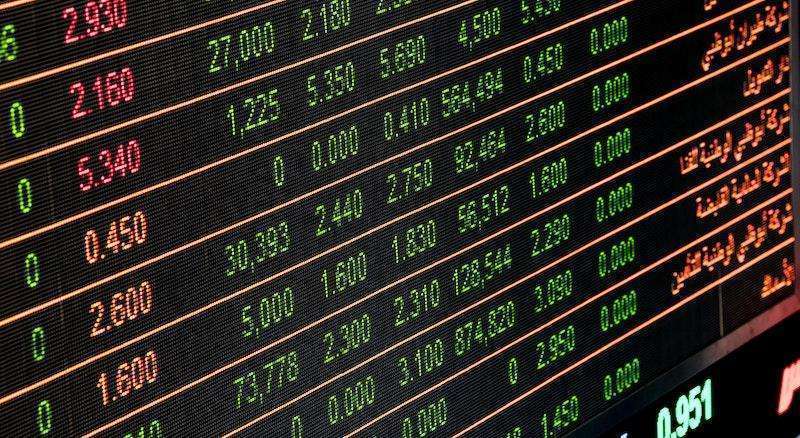
Finance is a hot topic industry-wide, and while much of the concern concerns volatile economic factors, it’s more so the lack of clarity surrounding them. Everyone has different opinions regarding what might or might not happen, but it’s essential to look at the macro picture to find a solution.
Illinois Real Estate Journal recently spoke with Patrick Tuohy, Senior Vice President at Marquette Bank, to discuss the past, present, and future related to multifamily finance.
Past
Before joining Marquette Bank 40 years ago, Tuohy managed interest rate and equity risk for Merrill Lynch, after which he decided to hone in on the middle-class business. Why? Tuohy said that these markets are poised to weather economic downturns, and they’ve done so since 1982.
To save money during an economic downturn, Class A renters tend to move to Class B, Class B renters move to Class C, and so on. The opposite happens when it turns back around: Class D moves to Class C, Class C moves to Class B, and Class B moves to Class A, exemplifying an unwavering demand for middle-market buildings.
Yet COVID-19 affected all sectors, not just multifamily, and hotels, restaurants, and entertainment venues were most directly impacted. To assist the owner/operator during this period, Marquette Bank gave the option of interest-only loans, which turned out to be very successful, meaning no defaults, and businesses could get back on their feet as the world transformed into our new normal. At the same time, $4 trillion was printed and spread around the U.S. to keep the economy from crashing.
But the future effects were misread, and inflation isn’t transitory as predicted. Inflation skyrocketed in 2022 as the pandemic moved toward an end, resulting in multiple 75-point basis point jumps. Rates in the last 60 days have jumped to 5.5–6% after hovering between 3.5–4% for the previous decade, Tuohy said, and a significant consequence, as it relates to the multifamily market, is a disconnect between the bid, the ask, the offer, and the sale.
Present
Sellers still want the inflated value for their building, based on a rate of 3.5–4%. A buyer, at this rate, could put 25% equity down and have the adequate cash flow to operate the building plus a decent return—but this is not possible at the adjusted rate of 5.5–6%, and today’s buyers must put down 30–40%, resulting in a disconnect between the buyer and seller. Because of this, the multifamily volume in Chicago and across the U.S. has decreased considerably for potential sellers. However, Tuohy said there is still a large buyer pool because the money is there, and buyers are willing to shell out additional equity for a suitable building in the correct location.
Tuohy said the same is happening within the single-tenant, triple-net market.
Future
No one is certain how or when this stalemate will go back to normal, but Tuohy said it’s only a matter of time. Sellers will have to sell at some point—for some reason—and as the economy slows and we enter a recession, rates will again reach a low- to mid-4%.
The is-it-isn’t-it recession is a topic of conversation itself, but for clarity, one must look at the fundamentals.
The U.S. is 70% consumer-driven, and when consumer sentiment, which is still reasonably strong, starts to decline rapidly, the average consumer starts to cut back on nonessential items like electronics. When this happens, manufacturers stop buying chips, and Tuohy said it’s because the chip industry is usually the first to feel the burn in times of financial uncertainty. When credit card rates exceed 20% in a credit-driven economy, consumers will think twice about putting debt on their balance sheet.
But consumer behavior is less predictable following COVID-19. People have not lessened their spending on luxuries like dining out and traveling, affecting other markets like single-family and homes have dropped 70–80%. Like multifamily, Tuohy said with a mortgage of 3.5–4% or lower, homeowners have no incentive to sell to buy a new home at a rate of 6%, ultimately leading to a mortgage industry layoff.
It’s a domino effect, starting with the housing industry as the backbone of our economy. When people are hit pause on homebuying, they’re also slower to buy furniture, appliances, etc.—all affected by increasing rates.
“It’s a prolonged process, and we’re still waiting to see,” Tuohy said. “Interest rate hikes set in motion a domino effect, but we’re only in the first stage.”
And then there’s inflation, which is affecting replacement costs for multifamily. Marquette Bank saw the cost of construction increase 20–30% for new projects, impacting the underlying value of apartment stock.
The average cost to replace a single unit in Chicago is $400,000, and in Chicagoland, $250,000.
“If existing apartment stock is half of that cost,” Tuohy said, “it makes for an attractive long-term investment. Buying an apartment unit for $250,000 or $300,000 in Chicago is significantly less than replacing that building when you factor in the cost of materials and labor.”
The same goes for single-family homes: Marquette Bank has 18 three-bedroom, two-bathroom townhomes under construction, for which prices recently jumped 25% on construction costs, turning $290,000 into $370,000. Marquette had to raise the price to around $490,000, yet they still sold.
That is to say; everything is interconnected. Across the U.S., replacement costs of single-family have a direct effect on the rental market, and the cost of replacing or building a home affects whether people can afford to buy—and the difficulty of this transition has only solidified the multifamily market, as the vacancy rate is less than 5% in Chicago.
And while it’s true that rental rates are increasing due to renters being priced out of the housing market, Tuohy said there’s another side to the equation. Insurance costs are up 7%, utility costs are up, and taxes have increased, as multifamily is considered a go-to sector to raise taxes because of the perception that more profit is being made.
“We have buildings that doubled in taxes this year from $40,000 to $80,000,” Tuohy said. “Because of these things, the margins have shrunk, and the owner/operators have to pass a portion of that cost onto the tenant. It’s no longer a matter of whether or not landlords want to raise rents—they have to break even.”
Tuohy said that Multifamily is not a “get rich” business but a long and challenging ride, now more so than ever. “It works well for people long term,” he said, “but it’s not for those seeking a short-term return.”
Source: A macro perspective of CRE finance with Marquette Bank – REJournals
https://www.creconsult.net/market-trends/a-macro-perspective-of-cre-finance/





